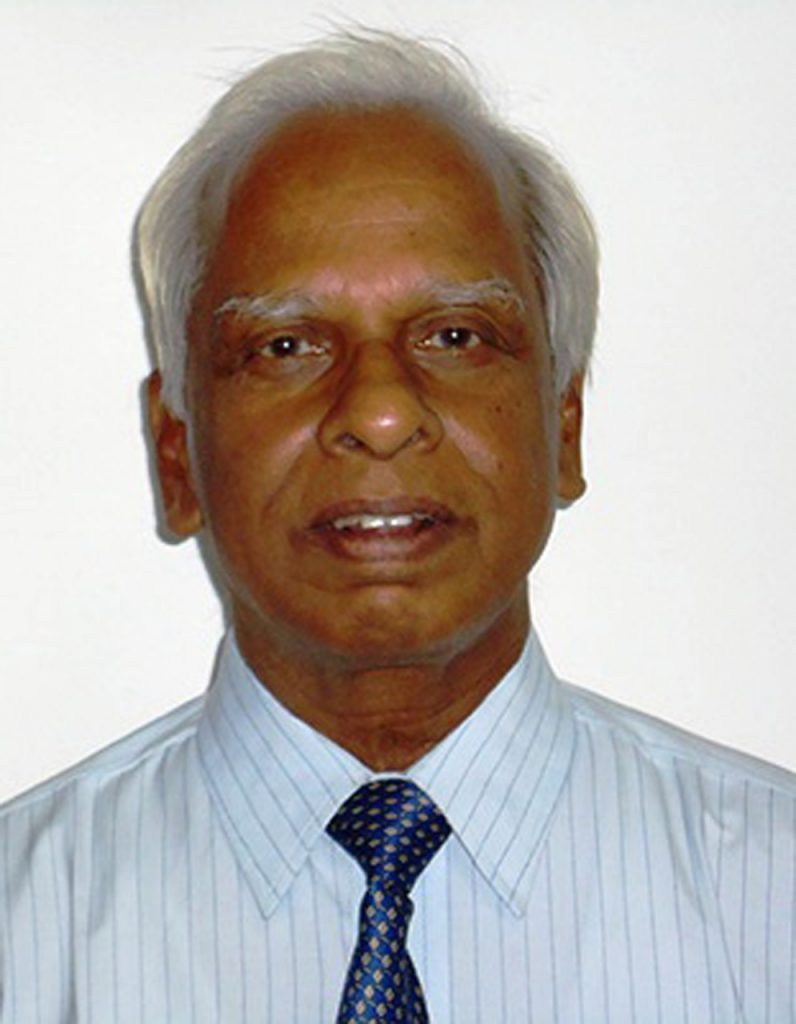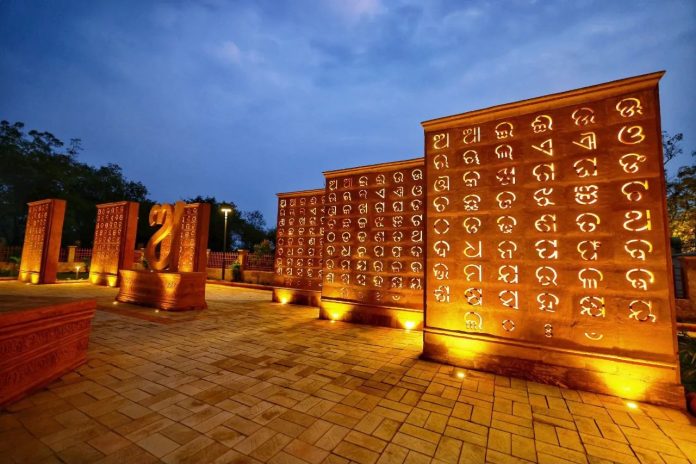On 14 February 2016, at a workshop conducted by the Odisha Sahitya Akademi, the well-known educationist and language specialist M.N. Kundu said that many students who had passed their Class X examination in recent years could not read an Odia newspaper with the expected ease. A couple of persons present at the event told me that it was an exaggeration, but that only showed that they did not reject the speaker’s assertion. B.K. Panda, the noted academic, lexicographer, and language educationist, told me some time back that in many schools in Odisha, quite a few students of Class V cannot read aloud a short paragraph in Odia—the reason being that they have not learnt the Odia alphabet well. One reads in Odia newspapers that in many upper primary schools, there is no qualified teacher to teach Odia and that often the games teacher is asked to teach the language. One of the teachers of the Odia medium upper primary school at Subarnapur, near Lake Anshupa—a school established in 1856, which has a past to be proud of—told me only recently, on condition of anonymity, that Class VII students in many schools these days cannot write a paragraph of five to six sentences in Odia. Spelling errors, he said, are a serious problem.
From a generous perspective, one could say that the authorities are probably unaware of this situation. Otherwise, they surely would have taken some affirmative steps in this regard. The authorities and the language activists believe that educated Odias today are indifferent towards their language. It is on this account, they say, that English medium schools are proliferating in the state. Parents, even of the low-income group, prefer to send their children to these schools, hoping that they would get economic opportunities in life, which they believe they would not get if they study in Odia medium schools where English is not properly taught. The best of the English medium schools, partly because of parental pressure, as they say, discourage their students from using their mother tongue during school hours. Parents also encourage their children to learn Hindi well, which they seem to view as an emerging language of power, if not of significant economic opportunity. Some good friends of mine, who are concerned about the future of Odia, have told me that Hindi is the new enemy of Odia.
This piece is about this new enemy. It says nothing about the old ones. There has already been much talk about them. I don’t find them interesting subjects to talk about. That’s my reason to turn to the new one.
To begin, let’s consider some more facts about Hindi in Odisha. Speakers of Odia are not shifting to Hindi. Even those parents who encourage their children to learn Hindi well are, as far as I know, not in favour of their children shifting to that language. Hindi is not the language of personal or professional communication among Odia speakers and is not likely to be in the future. Parents do not encourage their children to use Hindi for such purposes. People hardly read Hindi newspapers, and no Hindi newspaper is published in Odisha. It is not the language of day-to-day communication on a wide range of topics and it is not the language of the elite in Odisha. I do not think that Hindi is in the process of becoming at least the preferred, if not the sole, language in some domains of life in Odisha. Parents simply want their children to know the language well, so that they would not feel uncomfortable in most parts of the country. It cannot be denied that Hindi has almost become the main link language in the country, as far as day-to-day interaction is concerned.
Given the above, the best meaning of “enemy” in this context would be that it is hindering the development of our language. But it is not clear how. In any case, in my view, the term “enemy” is best avoided in a discourse on the subject of inter-language relationships because it discourages creative response to what is being viewed as a problem for a language. The enemy-attitude creates a barrier. Instead, one can think of a different metaphor, namely “neighbour”: a language, for the mother language in a multilingual context, is a neighbour. By the way, in terms of this metaphor, Hindi, Urdu, Bengali, and Telugu are Odia’s next-door neighbours. Barring a few, people in any part of Odisha do not speak these languages as their first language. But in Southern Odisha, quite a few people understand Telugu. In North-Eastern Odisha, most people understand Bengali and it is no exaggeration to say that people all over the state understand Hindi.
From my personal perspective, Hindi came to us as the language of India’s fight for freedom. I remember the prabhat pheris (roughly, morning processions in which the participants sang songs accompanied by musical instruments) in my village in which the participants used to sing “Raghupati Raghava Raja Ram,” a devotional song which was Mahatma Gandhi’s favourite, and the patriotic song “Jhanda Uncha Rahe Hamara,” among others. I am not sure, but I do not think any patriotic songs in Odia were sung in the prabhat pheris. I was five then. We used to sing “Jhanda Uncha…” at school in the prayer meetings. Our headmaster would lead the singing. Then in Class VI, if I remember correctly, we were taught Hindi and we were taught this language till Class VIII. We were taught Odia, English, and Hindi at the primary and upper primary levels. There was no three-language formula then. If Hindi had become part of the curriculum, it was, I guess, because it was seen as the language of the Independence Movement. If English was there in the curriculum, it might have been due to the general perception that one would get a government job if one knew English. Our headmaster, who taught us English, told us that we would know about the world if we knew English.
In the 1950s, Hindi came to urban Odisha through film songs and films and not long after, to rural Odisha. “Hanuman Chalisa” and “Ramcharitmanas” had become fairly popular in urban Odisha by the 1990s. In the 1980s, Hindi serials such as “Ramayana” and “Mahabharat” were watched by large numbers of people in the state. In sum, Hindi had a quiet, unobtrusive, and one could even say, a friendly entry into the linguistic space in Odisha. There is increasing exposure to Hindi in Odisha, with people of all generations watching many serials on television. In Odia television news and debates, not infrequently does one find the use of Odia and Hindi mixing. But this is only a reflection of the current trend to use Hindi-mixed Odia language in informal day-to-day conversation. This mixed language is natural. One cannot be exposed to Hindi in a number of domains, including education and media, and then manage to avoid using words from this language completely in verbal interaction, in particular, informal verbal interaction. But as far as writing is concerned, using Hindi words, which have not been naturalised in Odia, should best be avoided. The norm should be that a Hindi (or for that matter, any other language) word must be avoided if a widely used Odia equivalent is available. Only for creative purposes could this norm be violated. An excellent example of this is the mixed language in Surendra Mohanty’s highly acclaimed novel Nila Saila.
Hindi is now being taught in Odisha as a compulsory subject from Class VI to Class VIII, as it was in the 1950s. In the NEP 2020 terminology, it is being taught as the third language. There is no discontent about the inclusion of Hindi in the school curriculum; so, we think, it should continue to be taught. It is true that in Odisha, there is no domain of language use now where Hindi is the only or even the best option and this situation is unlikely to change in the future. But since Hindi seems to be one of the main link languages in most parts of the country, knowing this language could be an advantage. Besides, since knowledge-based literature in Hindi (books, Wikipedia pages, blogs, etc.) is richer than the same in Odia, as of now, it may not be unreasonable to suggest that it be used as a secondary library language by the speakers of Odia.
(The views expressed are the writer’s own)

Prof. B.N.Patnaik
Retd. Professor of Linguistics and English, IIT Kanpur
Email: bn.patnaik@gmail.com
(Images from the net)

